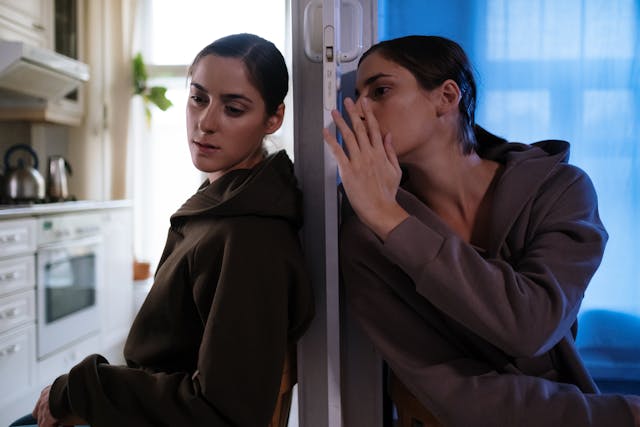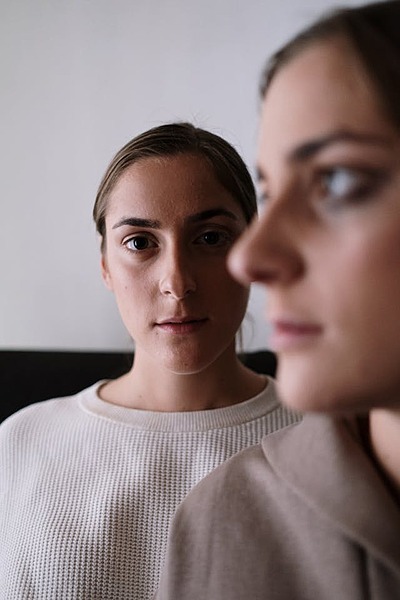Hallucinations—sensory experiences that seem real but are created by the mind—can be alarming and confusing for those who experience them. While often associated with serious mental illness, hallucinations can actually occur in many contexts and affect people from all walks of life. From the brief visual distortions experienced during migraines to the persistent voices heard in schizophrenia, these perceptual disturbances span a wide spectrum of experiences and causes.
What are hallucinations?
Hallucinations involve experiencing sensations without any actual external source or stimulus. Unlike illusions, which involve misinterpreting actual sensory input (like mistaking a coat rack for a person in dim lighting), hallucinations create sensory experiences where none exist in the external world. The person experiencing these sensory phenomena often perceives them as real and may find it difficult to distinguish them from actual sensory input.
These perceptual experiences can affect any of the five senses:
- Visual hallucinations: Seeing things that aren’t there
- Auditory hallucinations: Hearing sounds or voices that don’t exist
- Tactile hallucinations: Feeling sensations with no physical cause
- Olfactory hallucinations: Smelling odors that aren’t present
- Gustatory hallucinations: Tasting things without a source
Hallucinations can range from simple (seeing flashes of light or hearing indistinct sounds) to complex (seeing detailed figures or hearing coherent voices carrying on conversations). The experience varies widely from person to person and depends on the underlying cause.
Types of hallucinations
Auditory

Auditory hallucinations are among the most common type, particularly in psychiatric conditions like schizophrenia. These can range from simple sounds such as buzzing, clicking, or ringing to complex voices that may:
- Comment on the person’s actions or thoughts
- Carry on conversations with each other
- Give commands or instructions
- Provide a running commentary on everyday activities
The content of auditory hallucinations varies widely. Some people report benign or even positive voices, while others experience threatening, critical, or disturbing voices that can cause significant distress. The character of these hallucinations often provides important diagnostic clues about their cause.
Visual
Visual hallucinations involve seeing things that aren’t actually there. These can include:
- Simple forms: Geometric shapes, patterns, flashes of light, or colors
- Complex images: People, animals, objects, or scenes
- Micropsia/macropsia: Objects appear smaller or larger than they actually are
- Lilliputian hallucinations: Seeing miniature people or objects
Visual hallucinations are common in certain neurological conditions like dementia with Lewy bodies, in drug-induced states, during migraines, and in conditions like Charles Bonnet syndrome, which affects people with vision loss.
Tactile
Also known as haptic hallucinations, these involve sensations of touch or movement on or within the body without an actual physical stimulus. Examples include:
- Formication: The sensation of insects crawling on or under the skin
- Feelings of being touched, grabbed, or embraced
- Sensations of movement inside the body
- Vibrating or tingling sensations
These are particularly common in substance use disorders (especially with stimulants), withdrawal states, and certain neurological conditions.
Olfactory and gustatory hallucinations
These less common types involve smelling odors or tasting flavors that don’t exist:
- Phantom smells (phantosmia): Often unpleasant odors like burning, rotting, or chemical smells
- Phantom tastes (phantageusia): Typically metallic, bitter, or otherwise unpleasant tastes
These hallucinations can be associated with temporal lobe epilepsy, brain tumors, migraines, sinus infections, and certain psychiatric disorders.
Multimodal hallucinations
Some people experience hallucinations across multiple senses simultaneously. For example, someone might both see and hear a non-existent person speaking to them. These complex, multimodal hallucinations are often associated with psychiatric disorders, delirium, and certain neurological conditions.
Causes of hallucinations

Hallucinations can stem from numerous causes, both physical and psychological. Understanding the underlying cause is crucial for appropriate treatment.
Psychiatric conditions
Several mental health disorders can feature hallucinations:
- Schizophrenia spectrum disorders: Hallucinations, particularly auditory ones, are a hallmark symptom of schizophrenia. About 70-80% of people with schizophrenia experience auditory hallucinations.
- Bipolar disorder: During manic or depressive episodes, some people with bipolar disorder may experience hallucinations.
- Major depressive disorder with psychotic features: Severe depression can sometimes include hallucinations that often align with depressive themes.
- Post-traumatic stress disorder (PTSD): Flashbacks in PTSD can sometimes be so vivid that they qualify as hallucinations, where the person re-experiences sensory aspects of the traumatic event.
- Borderline personality disorder: During periods of extreme stress, some people with this condition may experience brief psychotic episodes that include hallucinations.
Neurological conditions
Many brain-related conditions can cause hallucinatory experiences:
- Dementia: Particularly dementia with Lewy bodies, which often includes vivid visual hallucinations as an early symptom.
- Parkinson’s disease: Up to 40% of people with Parkinson’s experience hallucinations, often visual in nature.
- Epilepsy: Particularly temporal lobe epilepsy, which can cause complex visual or auditory hallucinations before or during seizures.
- Migraines: Visual hallucinations can occur during the aura phase of migraines.
- Brain tumors or lesions: Depending on their location, tumors or lesions in the brain can cause various types of hallucinations.
- Charles Bonnet syndrome: Visual hallucinations that occur in people with vision loss.
Substance-related causes
Hallucinatory experiences can be induced by various substances:
- Hallucinogenic drugs: Substances like LSD, psilocybin mushrooms, DMT, and mescaline are known for causing hallucinations across multiple senses.
- Stimulants: Amphetamines, cocaine, and methamphetamine can cause hallucinations, particularly with heavy use or during binges.
- Alcohol: Withdrawal from alcohol in dependent individuals can cause hallucinations, most commonly visual or tactile.
- Prescription medications: Some medications can cause hallucinations as side effects, including certain antibiotics, anticonvulsants, antidepressants, and particularly Parkinson’s disease medications.
Other physiological causes
Several physiological states and conditions can lead to hallucinations:
- Sleep-related phenomena: Hypnagogic (when falling asleep) and hypnopompic (when waking up) hallucinations occur in the transition between wakefulness and sleep.
- Sleep deprivation: Going without sleep for extended periods can induce hallucinations.
- Delirium: Caused by various medical conditions including infections, metabolic imbalances, and organ failure, delirium often includes visual hallucinations.
- Fever: High fevers, particularly in children and older adults, can sometimes cause temporary hallucinations.
- Sensory deprivation: Extended periods without normal sensory input can lead to the brain creating its own sensory experiences.
- Bereavement: Some people report briefly seeing or hearing deceased loved ones, which can be considered a normal grief response in certain contexts.
Risk factors
Various elements can raise the chances of having hallucinations:
- Inherited vulnerability: Having relatives with psychotic conditions heightens susceptibility.
- Previous traumatic experiences: Especially childhood trauma
- Chronic stress: Prolonged stress can trigger psychotic symptoms in vulnerable individuals
- Sleep disorders: Chronic sleep problems can increase vulnerability
- Age: Elderly individuals are more susceptible to certain types of hallucinations
- Sensory impairments: Vision or hearing loss can sometimes lead to hallucinations
- Medical conditions: Various medical conditions affecting brain function
How to diagnose it?
The diagnosis of hallucinations involves identifying both the characteristics of the experiences themselves and their underlying cause.
Medical history and examination
A thorough medical history is crucial and typically includes:
- Detailed description of the hallucinations (type, frequency, content, context)
- Complete medication review
- Substance use history
- Review of existing medical and psychiatric conditions
- Family history of psychiatric or neurological disorders
The physical examination focuses on identifying any neurological abnormalities that might point to a physical cause.
Psychiatric evaluation
A mental health assessment explores:
- The person’s mental state and thought processes
- Presence of other psychiatric symptoms
- Impact of hallucinations on daily functioning
- Risk assessment for self-harm or harm to others
- Insight into the hallucinatory experiences
Diagnostic testing
Depending on the clinical picture, diagnostic tests might include:
- Blood and urine tests: To check for infections, metabolic disorders, substance use, or medication effects
- Brain imaging: MRI or CT scans to look for structural abnormalities, tumors, or evidence of stroke or dementia
- Electroencephalogram (EEG): To detect seizure activity or other abnormal electrical patterns in the brain
- Lumbar puncture: In cases where infection or inflammation of the central nervous system is suspected
- Vision and hearing tests: Particularly when hallucinations affect these senses
Differential diagnosis
Clinicians must carefully distinguish hallucinations from:
- Illusions: Misinterpretations of actual sensory stimuli
- Vivid imagery: Intense mental imagery that the person recognizes as internal
- Pseudohallucinations: Sensory experiences recognized as coming from inside the mind rather than the external world
- Delusions: Fixed false beliefs without actual sensory perceptions
- Normal religious or cultural experiences: Some experiences that might appear hallucinatory may be normal within certain cultural or religious contexts
Treatment methods

Treatment for hallucinations depends primarily on their underlying cause. A comprehensive approach often involves both addressing the root cause and managing the hallucinations themselves.
Medical treatments
Treating underlying medical conditions: If hallucinations stem from a physical condition like infection, tumor, or metabolic disorder, treating that condition is the priority.
Medication adjustments: If hallucinations are a side effect of medication, the dosage may need to be adjusted or the medication changed.
Antipsychotic medications: These are often the first-line treatment for hallucinations related to psychotic disorders:
- First-generation (typical) antipsychotics like haloperidol
- Second-generation (atypical) antipsychotics like risperidone, olanzapine, or quetiapine
Other psychiatric medications: Depending on the underlying condition, other medications might be prescribed alongside or instead of antipsychotics:
- Mood stabilizers for bipolar disorder
- Antidepressants for depression with psychotic features
- Anti-anxiety medications for stress-related hallucinations
Medications for neurological conditions: For hallucinations related to conditions like Parkinson’s disease or dementia, specialized approaches may be needed to balance treatment of hallucinations with management of the primary condition.
Psychological treatments
- Cognitive Behavioral Therapy for psychosis (CBTp): Helps people develop coping strategies and change how they relate to hallucinatory experiences.
- Acceptance and Commitment Therapy (ACT): Focuses on accepting experiences while committing to behavior changes that support well-being.
- Supportive therapy: Provides emotional support and practical assistance for dealing with hallucinations.
- Family therapy: Educates family members and improves communication and problem-solving skills.
- Social skills training: Helps address social difficulties that may arise from experiencing hallucinations.
- Hallucination-focused integrative therapy: Combines elements of CBT with other approaches specifically for managing hallucinations.
Lifestyle and self-help strategies
Several self-management techniques can help people cope with hallucinations:
- Sleep hygiene: Maintaining healthy sleep patterns can reduce the frequency of certain hallucinations.
- Social support: Maintaining connections with understanding friends and family can provide emotional support.
- Avoiding triggers: Identifying and avoiding specific triggers that worsen hallucinations.
- Structured routine: Following a predictable daily schedule can provide stability.
- Reality testing: Techniques to distinguish hallucinations from reality, such as seeking confirmation from trusted others.
- Stress management: Since stress can trigger or worsen hallucinations, stress reduction techniques are important:
- Mindfulness meditation
- Progressive muscle relaxation
- Deep breathing exercises
- Regular physical activity
Emerging treatments
Several innovative approaches are being explored:
- Transcranial magnetic stimulation (TMS): Non-invasive brain stimulation that may help reduce auditory hallucinations.
- Avatar therapy: A novel approach for voice-hearers where they create a visual representation of their voice and learn to control dialogue with it.
- Virtual reality therapy: Uses VR to help people develop skills for managing hallucinations.
When to seek emergency help
While many hallucinations can be managed with ongoing treatment, certain situations require immediate medical attention:
- Hallucinations accompanied by thoughts of harming oneself or others
- Hallucinations that command dangerous or harmful actions
- Sudden onset of severe hallucinations with no previous history
- Hallucinations accompanied by high fever, severe headache, or confusion
- Hallucinations occurring after head injury
- Hallucinations in the context of substance use or withdrawal
In these situations, emergency services should be contacted immediately.
Misconceptions about hallucinations
Many misconceptions surround hallucinations, contributing to stigma and misunderstanding:
1. Misconception: Everyone who hallucinates has schizophrenia.
Reality: Hallucinations occur in many conditions besides schizophrenia, including neurological disorders, substance use, and even in otherwise healthy individuals under certain circumstances.
2. Misconception: Hallucinations always involve seeing things that aren’t there.
Reality: Hallucinations can affect any sense, with auditory hallucinations being most common in many conditions.
3. Misconception: People who hallucinate are dangerous.
Reality: The vast majority of people who experience hallucinations are not violent. Actually, they tend to be targeted by violence more often than they commit it.
4. Misconception: Hallucinations are always distressing.
Reality: While hallucinations can be frightening, some people experience neutral or even pleasant hallucinations.
5. Misconception: Hallucinations indicate severe mental illness that cannot be treated.
Reality: Many causes of hallucinations are treatable, and even chronic hallucinations can often be managed effectively.
6. Misconception: Acknowledging or discussing hallucinations will make them worse.
Reality: Open discussion in a supportive environment can actually help people develop better coping strategies.
References:
- American Psychiatric Association. (2022). Diagnostic and statistical manual of mental disorders (5th ed., text revision). American Psychiatric Publishing.
- Aleman, A., & Larøi, F. (2023). The neuroscience of hallucinations. Springer Nature.
- Chaudhury, S. (2022). Understanding and treating visual hallucinations: A clinical perspective. Journal of Clinical Psychiatry, 83(4), 21-28.
- Fernyhough, C., & McCarthy-Jones, S. (2023). Hallucinations in healthy individuals: A review of the literature. Psychology Bulletin, 149(2), 203-215.
- Johns, L. C., & van Os, J. (2022). The continuity of psychotic experiences in the general population. Clinical Psychology Review, 21(8), 1125-1141.
- National Institute of Mental Health. (2024). Psychosis. Retrieved from https://www.nimh.nih.gov/health/topics/psychosis
- Sommer, I. E., & Kahn, R. S. (2023). The Hearing Voices Network: A valuable resource for patients and clinicians. British Journal of Psychiatry, 218(1), 1-4.
- World Health Organization. (2023). International classification of diseases for mortality and morbidity statistics (11th Revision). https://icd.who.int/browse11/l-m/en
- Zarcone, D., & Corbetta, M. (2022). Hallucinations as a disconnection syndrome. Nature Reviews Neuroscience, 18(3), a32-a45.